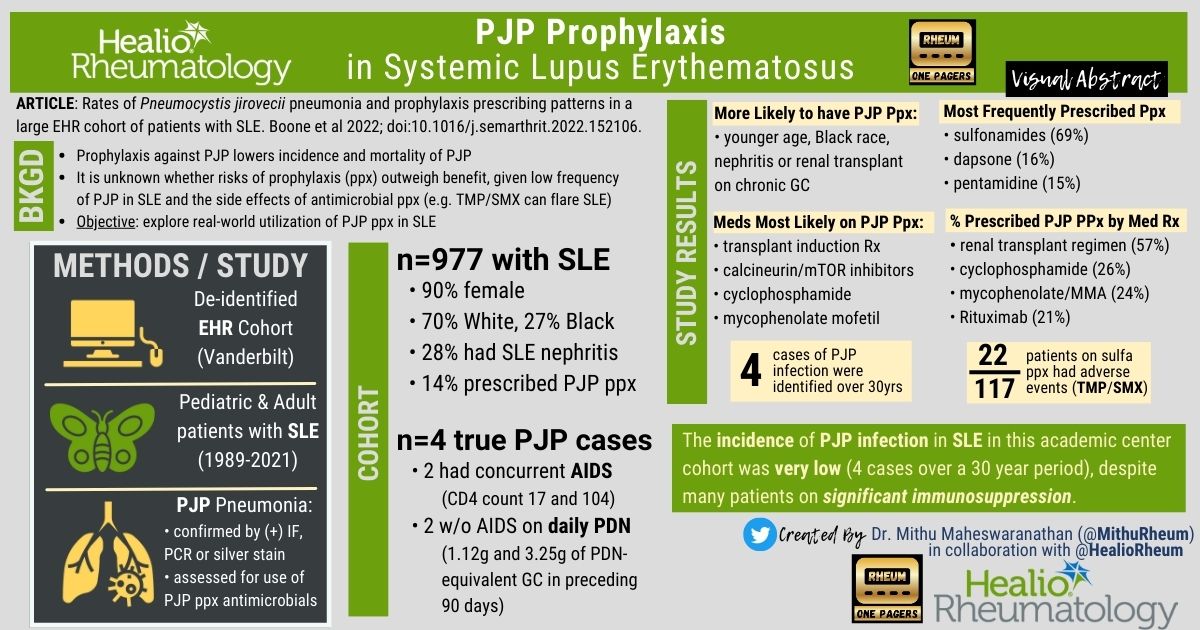P. jirovecii pneumonia prophylaxis use in lupus ‘much lower’ than prior studies suggest
Click Here to Manage Email Alerts
The real-world use of Pneumocystis jirovecii pneumonia prophylaxis in patients with systemic lupus erythematous is “much lower” than prior survey-based studies suggest, according to data published in Seminars in Arthritis and Rheumatism.
“Limited data exist on incidence of Pneumocystis jirovecii pneumonia (PJP) infection in systemic lupus erythematosus,” April Barnado, MD, of the department of medicine and the division of rheumatology at Vanderbilt University Medical Center, told Healio. “Little is known about the real-world utilization of PJP prophylaxis in SLE patients or the patient and provider factors that impact PJP prophylaxis. Current studies are limited by physician self-report of their practice patterns, low sample size, and focus on general rheumatic diseases rather than SLE specifically.”

To investigate the prevalence of PJP in patients with SLE, as well as the use of PJP prophylaxis, Barnardo and colleagues analyzed data from a real-world cohort using electronic health records. The researchers identified patients with SLE who also had PJP based on ICD-09CM and ICD-10CM billing codes and keywords. Positive cases of PJP infections were defined by positive immunofluorescence, PCR or Gomori methenamine silver staining on sputum or bronchoalveolar lavage specimen.
The researchers additionally evaluated the cohort for patients who may have received prophylaxis for PJP by reviewing patient medication lists. In patients where PJP infection was confirmed, Barnado and colleagues collected demographic information through medical chart reviews. Information collected here included medication exposures and laboratory values, as well as demographic data.
The analysis included a total 977 patients with SLE, of whom four demonstrated confirmed PJP infections. Among those four patients, two had acquired immunodeficiency syndrome (AIDS). According to the researchers, none of these patients had been receiving prophylaxis. In all, 14% of the 977 included patients with SLE had been prescribed PJP prophylaxis. Among the 617 patients with SLE who had received immunosuppressive therapy at some point, 21% patients received prophylaxis for PJP.
According to the researchers, the most common prophylaxes prescribed were sulfonamides. Adverse events occurred in 22 out of 117 cases of a patient being placed on a sulfonamide. Patients who were younger, Black, were receiving glucocorticoids, demonstrated nephritis or had kidney transplants were more likely to receive the prophylaxis.
“PJP infections were very rare in our large SLE cohort spanning over 30 years with only four PJP cases identified,” Barnado said. “We did not find an increased frequency of PJP in our SLE EHR cohort compared to our source population. Real-world use of PJP prophylaxis in SLE patients was much lower than reported by previous, survey-based studies of rheumatologists. Adverse events from prophylactic agents were uncommon and mild. This finding suggests that sulfonamides may not be as problematic in SLE patients as suggested by previous patient survey studies.”
